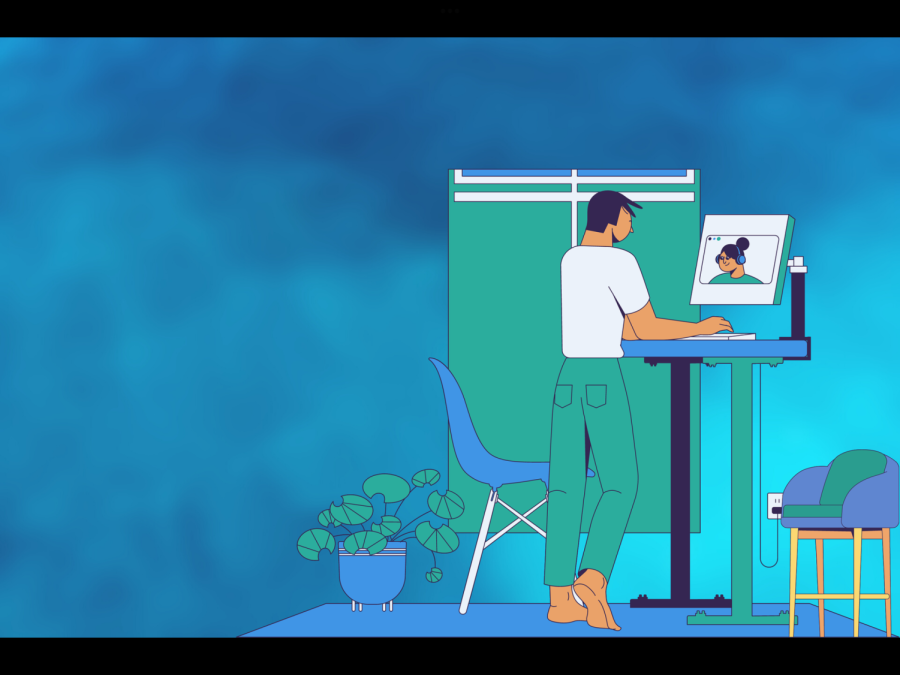United We Stand: Why South High Students Deserve Standing Desks
June 21, 2022
For approximately eight periods a day, South High School students are confined to the physical and emotional stressor of sitting. Humans, especially children, are meant to be physically active throughout the day. When they are deprived of this physical activity, disastrous short and long term effects can occur. Besides the negative effect sitting has on physical and mental health, it also hinders academic growth. Studies show that people are more efficient and productive while standing as opposed to sitting. South High students require more standing time, and the introduction of standing desks in the makerspace lab in our school library will help to address this issue.
Although most people find sitting to be comfortable, it can become increasingly harmful to human beings in the short and long term. Numerous health detriments that accompany excessive sitting are quite similar to diseases caused by excessive consumption of carcinogens. BetterHealthChannel.com called sitting “the new smoking,” and stated that excessive sitting increases the risk of common health problems like heart disease, diabetes, and some cancers. The Mayo Clinic did a meta-analysis of thirteen studies that researched the link between sitting time and activity levels, and found that those who sat for more than eight hours a day with little to no physical activity had increased risks of dying similar to those who suffered from diseases caused by obesity or smoking. A new study published online in the Journal of Epidemiology & Community Health found that approximately 50,000 deaths in the UK alone could have been prevented if sedentary lifestyles (sitting more than 6 hours a day) were eliminated completely.
Although the adverse effects of prolonged sitting are more prevalent in the long-term, they can even be seen within the span of one’s eight-hour workday. The National Library of Medicine conducted a study in which they questioned office workers who sat six and a half hours out of an eight-hour workday about their symptoms. Approximately 48 percent reported that they felt physically uncomfortable while at work, while over 70 percent of workers reported exhaustion throughout the workday. Additionally, over 50 percent of workers from the study reported that they felt neck, shoulder, or back pain. According to the American Cancer Society, prolonged sitting is linked to a higher risk of death from all causes because humans were not ever meant to be doing it.
From an evolutionary standpoint, humans are meant to be upright. Sitting down compresses vital organs, and even exacerbates digestive problems due to the compressing of the GI tract, which aids in digestion. Furthermore, humans also work more productively and efficiently while standing. Standing increases blood flow throughout the entire body and allows the body to be stimulated. Researchers at Texas A&M University sought to test this hypothesis, and their results were enlightening. After studying 167 workers in a Texan call center over a six month period, they found that employees who used standing desks had 23% more successful calls than their seated colleagues after one month, and 53% more successful calls after six months. Mark Begden, researcher and author of this study, conducted multiple separate studies in classrooms that yielded similar results. In a study of approximately 300 second to fourth graders, students who learned in classrooms with standing desks demonstrated 12% greater task engagement as opposed to students who learned in classrooms with traditional desks. The positive effects of standing while working can be seen across the board, from fourth graders to call-center employees. As a school that cares about the wellbeing of its students, South High should invest in standing desks.
The average price of sit-down desks range anywhere from 100-300 dollars, while the average price of standing desks range anywhere from 300-1500 dollars according to thestandingdesk.com. Although standing desks are a bit pricier, our school does not have to invest in the most expensive standing desks available, and they would only need to purchase an amount that sufficiently, but comfortably, fills the makerspace lab. Students make use of the lab throughout the entirety of the school day, and standing desks would only bolster their productivity. Students would have the ability to walk freely with the desks and collaborate efficiently with their peers, which is something that is not always possible with sit-down desks. Standing desks in the lab could be a trial period, and if all goes well, the school could potentially go on to invest in standing desks for classrooms as well. It’s time to embrace the future, and giving the students freedom to learn in the desks that they desire is a start.








